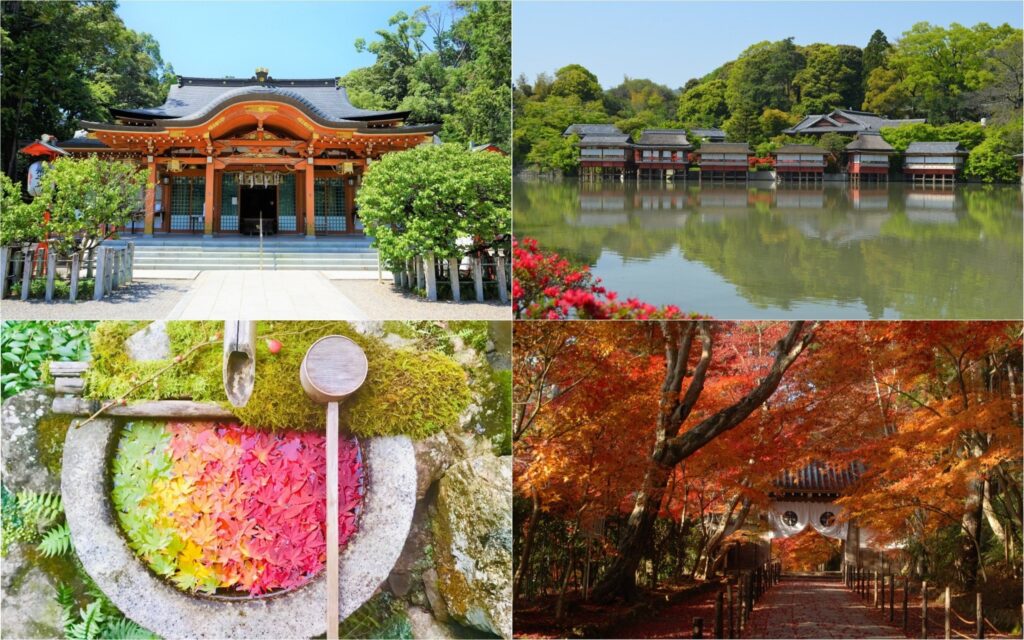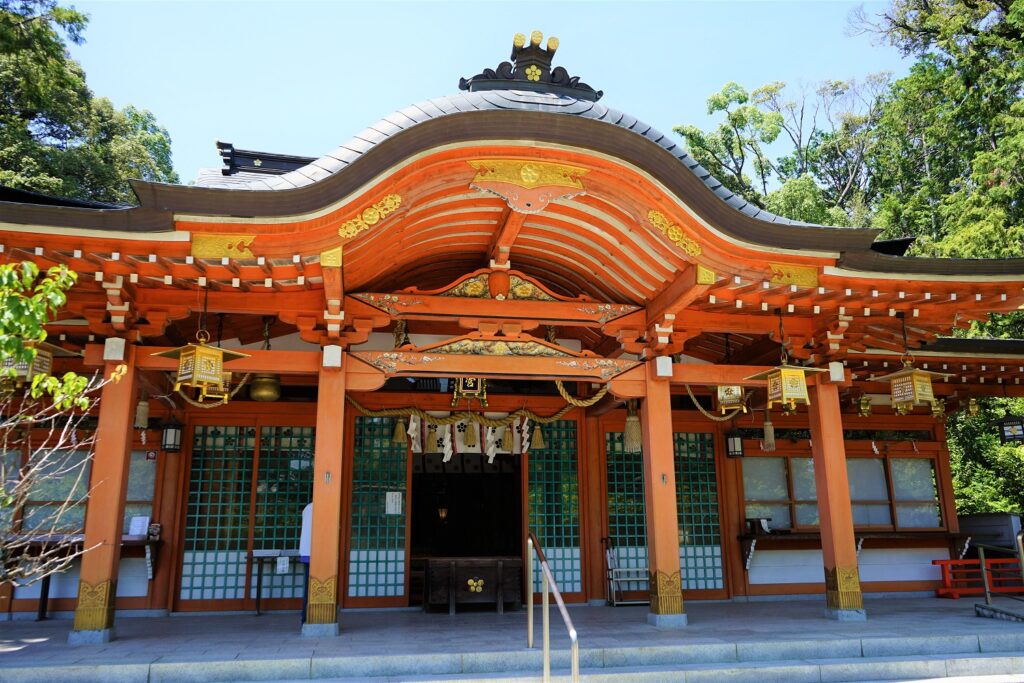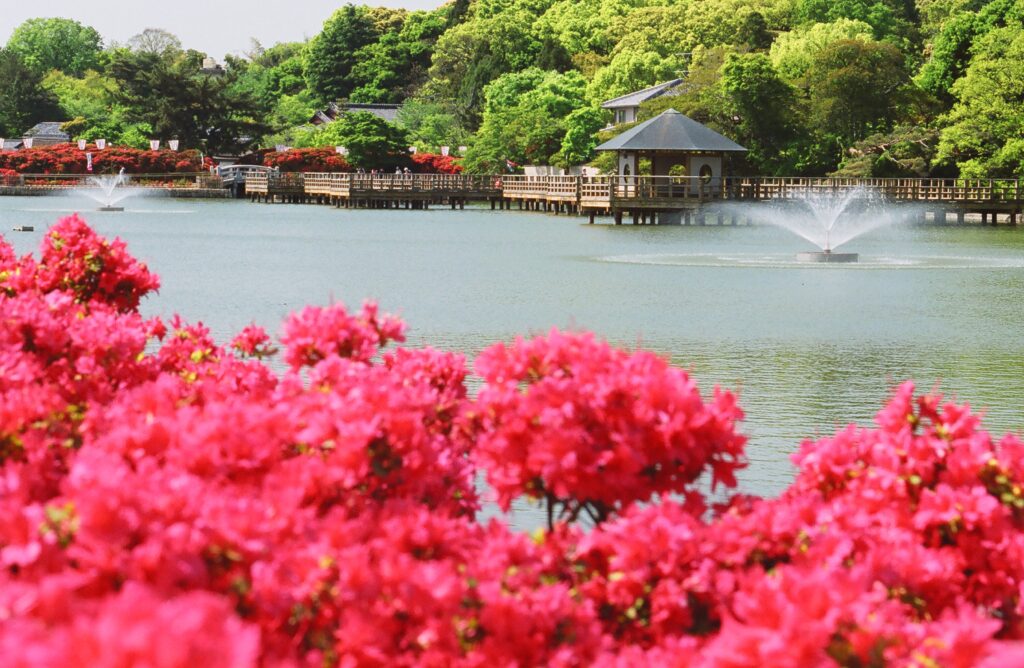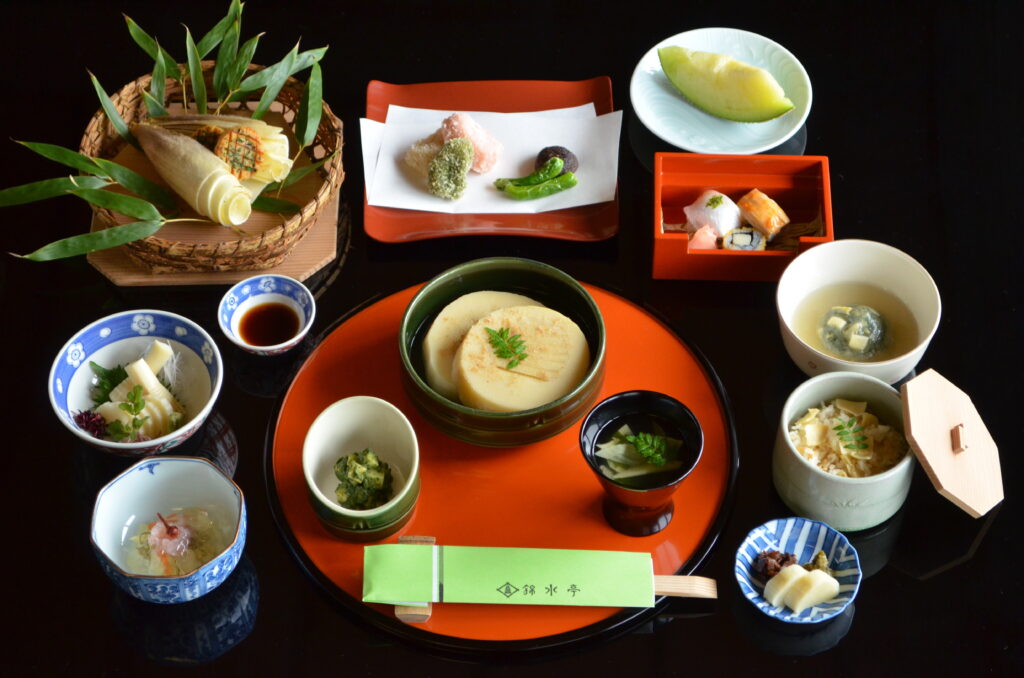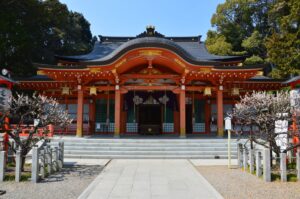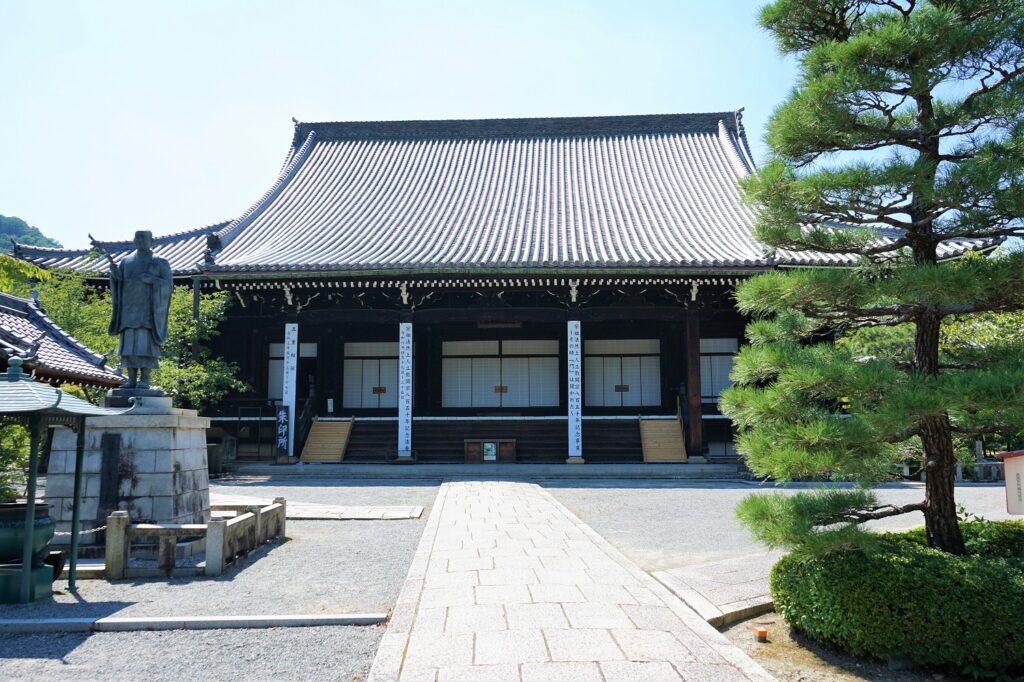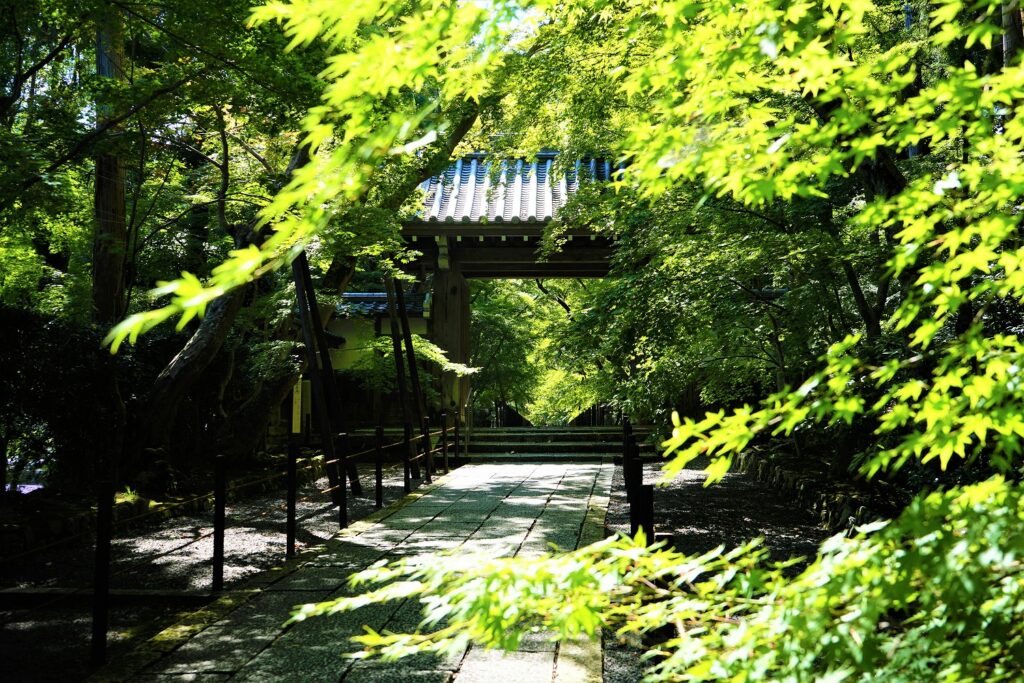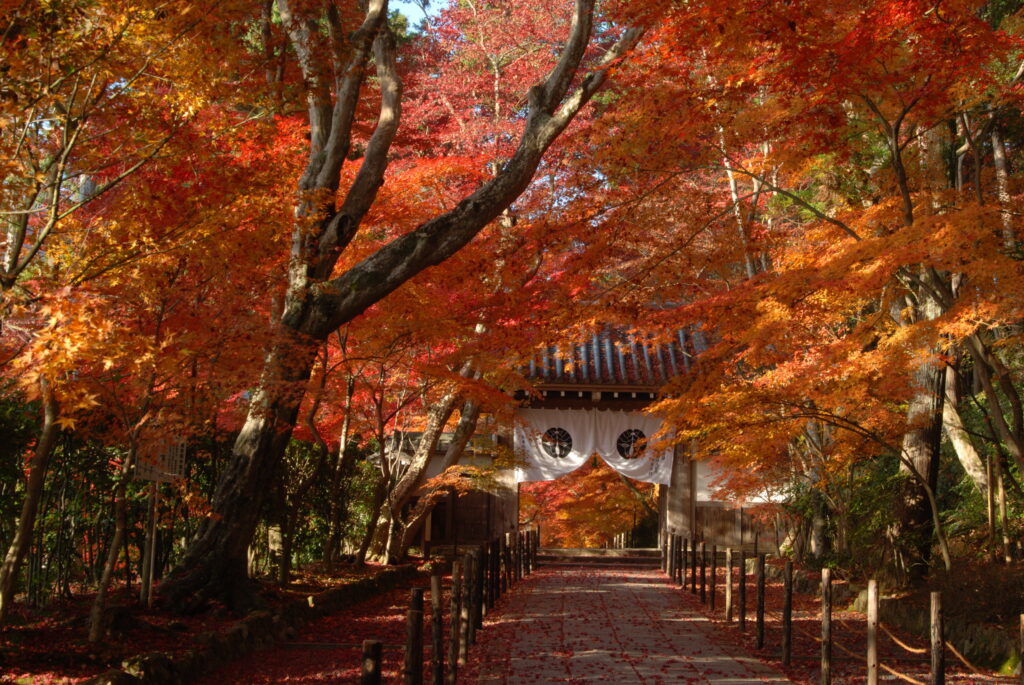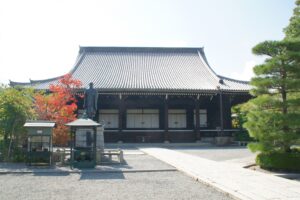3. Nagaoka Palace Daikokuden Park
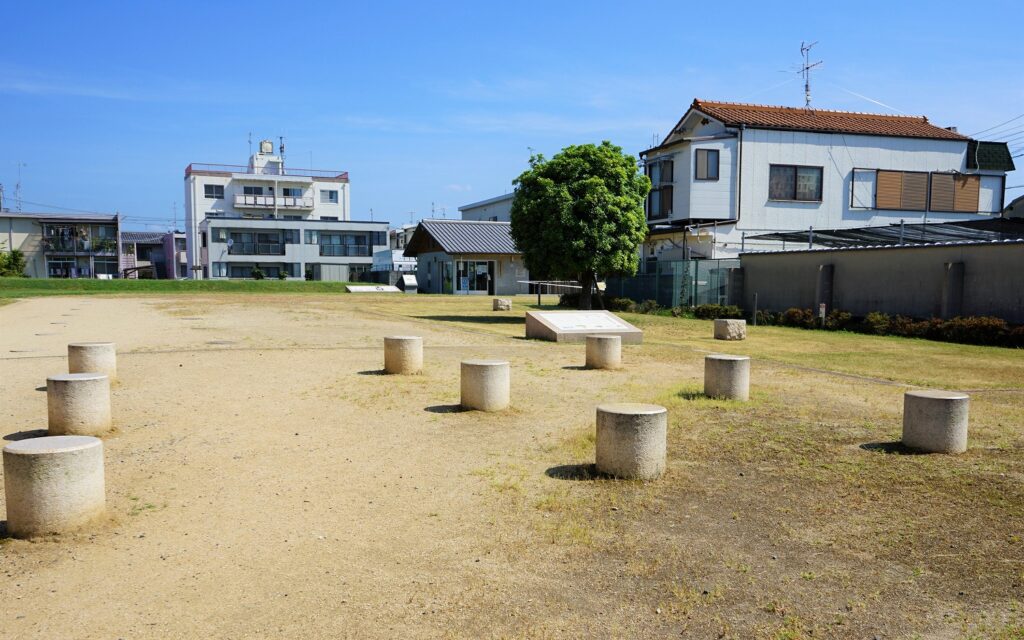
Nagaokakyo served as Japan’s capital for ten years during the rule of Emperor Kanmu (reigned 781-806). The foundation and remains of Nagaoka Palace (Nagaokakyu) have been discovered in what is today Muko City.
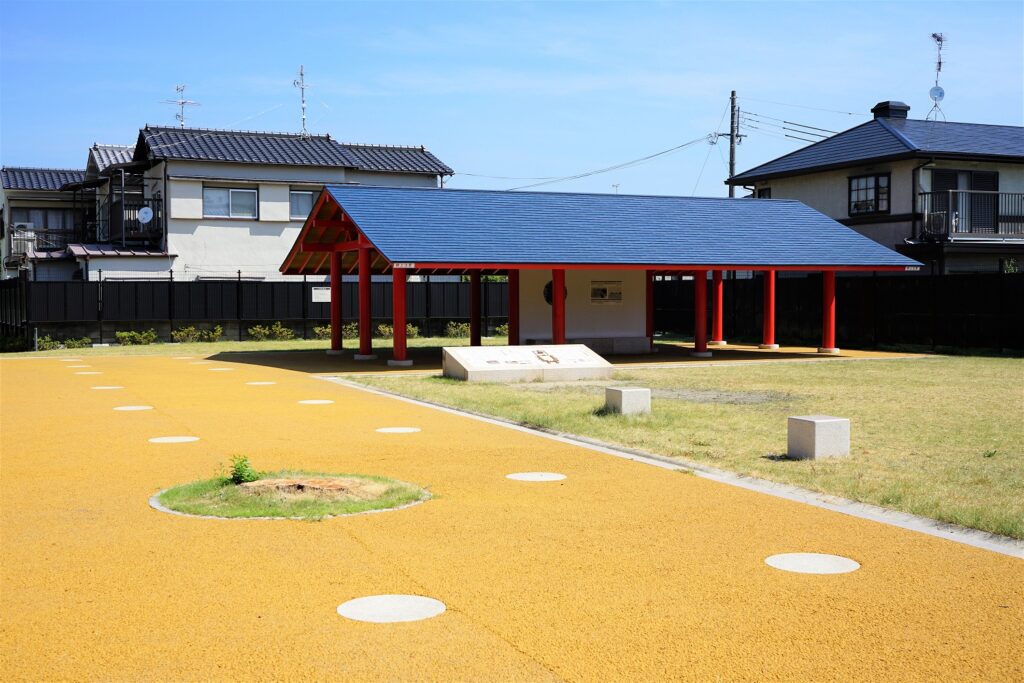
Just ten years after it was established, the capital was changed to Heian-kyo, present-day Kyoto City, because of a curse. In Daikokuden Park, visitors can see the remains of the Imperial Audience Hall (Daikokuden).
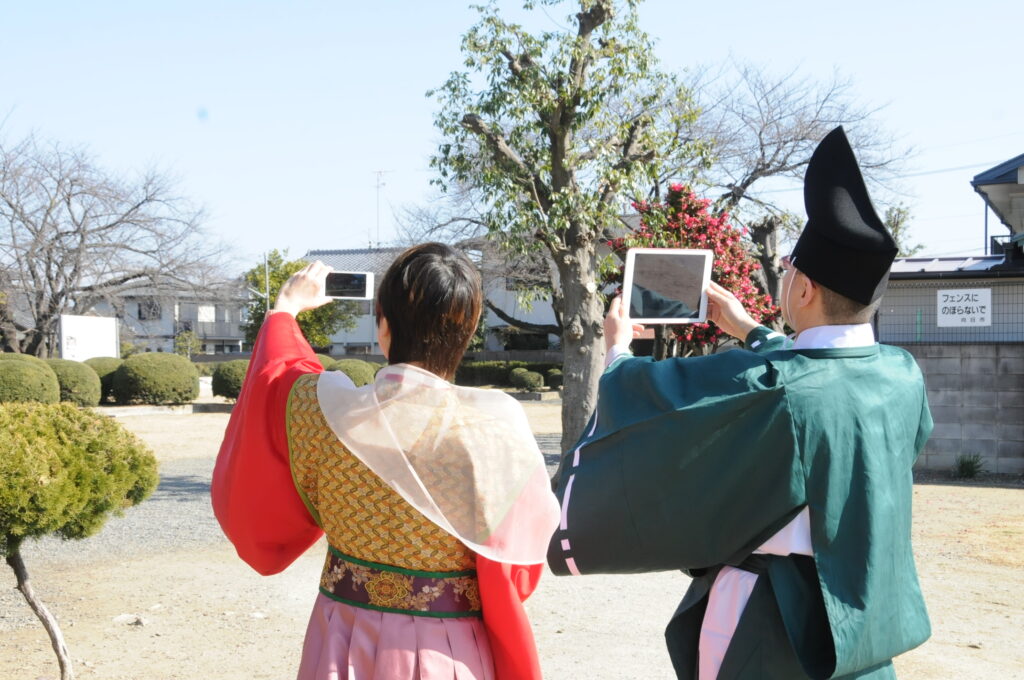
The best way to enjoy your visit here is to use AR Nagaokakyu, an augmented reality app that shows how the palace buildings used to look, more than 1,200 years ago. You can either download the app on your smartphone or borrow a tablet from the office of Chodoin Park. After turning the app on, hold your device toward the park and the former structures will appear on the screen.
Visitors can also rent Nagaoka-period attire and take photos of themselves using the virtual backgrounds offered by the AR Nagaokakyu app.
The Nagaokakyu Daikokuden Park is lovely to visit in spring when its many sakura trees are in bloom. Also, if you visit on November 11, you can enjoy a ceremony held in remembrance of the ancient Nagaokakyo capital.

